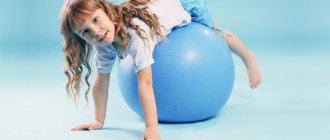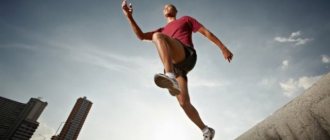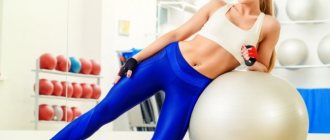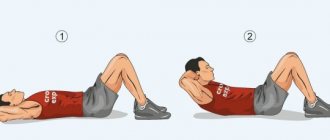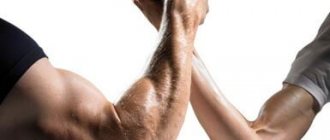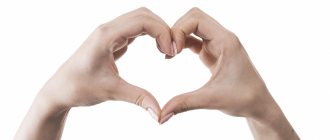Developing a skill from childhood
The more time a child devotes to sports activities, for example, table tennis, acrobatics, and simply active games, the better his dexterity and coordination develop.
Given the normal state of the nervous system and vestibular apparatus, dexterity at birth varies slightly among different children. But then, depending on the lifestyle, the potential is lost. As a result, someone cannot catch a tennis ball thrown at him from 10 meters, and someone hits a basketball with a basketball from 20 meters, standing with their back to it. Let's look at why this happens.
Childhood is the most convenient time for developing the necessary physical characteristics. Muscle memory absorbs all movements like a sponge, firmly preserving them for many years. Then, as the child gets older, the ability to learn begins to fade. Of course, it's never too late to learn. But at 18–20 years old, training any physical skill will be somewhat more difficult than at 13–14. And after 30 years, solving the same problem will require even more time and effort. It's the same with coordination. The sooner you start working on it, the easier it will be to achieve results.
How does agility improve athletic performance?
Agility is a skill that is included in many sports and often separates the average from the elite.
Quick changes of direction and speed take pride of place in many sports. In many individual sports, such as tennis and badminton, it is necessary to quickly react to the position of the ball. In team sports such as hockey, football, netball, volleyball and rugby this is perhaps even more important. You need agility to react to the position of the ball and the opposing players.
Football
In football, agility helps you dribble and pass, successfully getting around your opponent. It also plays a huge role in the goalkeeper's success, as he needs to react to the direction of the ball as it rushes towards him.
Tennis
Tennis players must always react to changes in the direction of the ball. Agility means they can quickly change direction at the very last second and make sure their racquet makes contact with the ball and delivers it back.
Netball
In netball, passing the ball between players requires a high level of dexterity from all team members. Otherwise, the opponent can take control of the game in the blink of an eye.
Rugby
Rugby requires a lot of strength and power, but agility is also an important skill. Rugby players must react and move quickly to avoid tackles and try to get ahead.
Simple coordination tests
Let's do the following test: try to rotate your hand clockwise, and the same arm at the elbow counterclockwise. It doesn't work out, does it? But it works great to rotate it all in one direction. This is because our coordination center is accustomed to symmetry, peace, and synchronicity. If something needs to be done not according to the usual scenario, difficulties arise, because the brain and body do not know how to do this, they need to be taught. By the way, this is the first coordination exercise, in fact, the beginning of its training.
Another test: stand on one leg, take the other back, arms to the sides. Close your eyes and count how long you can stand like this. This is also a coordination exercise that will help improve your balance and agility.
Third test: take 2 tennis balls (by the way, let them lie at home, sometimes they are useful) and throw them against the wall alternately with your right and left hand - it works out well, right? Now stand on one leg and do the same. More difficult? There is such a moment. And now the best part - jump on one leg and continue throwing and catching balls. Everything, stupor, confusion, the balls flew into the corners, and you actually fell.
There is also more than one coordination test, you can come up with anything you want. Just order your body to perform a non-standard set of movements. And you will see how imperfect your body is in this regard.
Leg lunge from fighting stance
Take a vertical body position. Place your palms clenched into fists in front of you at chest level. The knee of the right leg is pulled up here with a sharp movement. At the same time, perform a light jump on the supporting limb. Then they change legs and repeat the above steps.
The exercise is suitable for developing dexterity, sense of balance, and coordination of movements. By balancing on one limb, a person learns to maintain his center of gravity.
Vestibular apparatus
This segment of the brain helps our body determine where is down and where is up, where is right and where is left. It works due to hydraulic pressure on special receptors. If you remove gravity, the vestibular apparatus will simply be lost.
This part of the brain is responsible for balance and dexterity. There is also a special training for him, which can really help you quickly adapt to sudden non-standard movements.
Test for the vestibular apparatus (or balance): stand up straight, use your legs to make 10 rotations clockwise, then immediately 10 rotations counterclockwise. Stop suddenly and try to stand on one leg. After this, many people are unlikely to be able to resist even two. This test shows the level of development of your vestibular system. By the way, dancing, acrobatics, figure skating, and pole exercises help strengthen it well.
Over time, if it is not trained, the vestibular apparatus degrades, and it becomes more difficult for the body to adapt after rotations and sudden changes in position. Nausea and dizziness may occur. By the way, nausea from air pockets on an airplane or from sudden accelerations is a sign of a weakened vestibular system.
A good way to develop it is this:
- Stand straight, arms along your body or cross them over your chest.
- Make 10 clockwise turns using your lower back. That is, the legs are in place, everything above the pelvis rotates. The greater the amplitude of rotation, the better.
- Stop suddenly, listen to your feelings. If nausea occurs, do another 10 repetitions, but at a slower pace.
- If there is no nausea, make 10 turns counterclockwise.
- Enough for the first time. Repeat the exercise the next day, but double the number of rotations.
- Then turn on rhythmic music and do these rotations for 10, 20, 30 minutes. On the one hand, your lateral abs and lower back will be pumped up, and on the other, your vestibular apparatus will be normal. And one more bonus - if you suddenly take more alcohol than you can and feel the so-called helicopters, you will no longer run to the toilet. However, we do not recommend drinking.
Now you know how to strengthen the vestibular apparatus. You already know a couple of exercises for coordination and agility, here are a few more.
Somersaults back and forth
In order to perform a physical exercise to develop dexterity, take a squatting body position. Place your palms on the floor in front of you. Press the chin tightly to the chest. Make a smooth somersault over the head in the frontal direction. The exercise is repeated 10-15 times. Then they move on to somersaults over their heads back.
Training allows you to achieve progress in the development of general coordination. Skills are honed that can become useful during a fall. To avoid injury, exercise should be done on an unsteady surface.
Exercises to develop coordination
Coordination exercises include, first of all, all the tests that we cited above. We’ll also add the following elements that will help improve your coordination skills:
- To develop our visual motor coordination, take a tennis ball, stand on one leg and throw it, catching it in turn with your right and left hand. Then throw with your right, catch with your left. And vice versa. When this becomes easy for you, take the second ball (this is what came in handy!).
- To improve your coordination, start playing table tennis. It's simple and fun. You concentrate your gaze on the ball and hit it with your racket. High speed and concentration perfectly develop reaction and motor skills.
- To develop balance, it is convenient to stand on one leg while doing different things at the same time - read a book, throw a ball, rotate your head.
- Do agility tests every week. Each coordination exercise helps develop it. In addition, each test is an exercise in coordination.
- Make coordination exercises more difficult by adding new elements. For example, try juggling two balls while standing on one leg. Better yet, jump over a low obstacle sideways, or jump alternately on your right and left feet.
- Another type of coordination exercise is fighting with a tennis ball. Boxers and those who want to learn how to hit quickly and accurately will really like it. Let's talk about this exercise in detail.
Fight Ball
You will need a baseball cap with a size adjuster on the back of the head, a strong and elastic elastic band, a tennis ball and a band-aid. You need to attach the elastic band to the ball with a plaster, and fasten the other end of the elastic band to the cap in the area of the regulator. The length of the elastic should be slightly shorter than the length of your outstretched arm.
We put the cap on with the visor back, stand in a striking stance, hold our hands to our face, and hit the ball with our fists (with our striking knuckles). The ball flies away from you, stretching the rubber band, then returns back with acceleration. You can avoid the flying ball by leaning slightly to the side, or you can hit it with your other hand. This way you can box the ball as much as you want.
As a competition goal, you can use the number of hits or the time during which the ball is never left without a hit. Be prepared for it to fly in your face sometimes. And remember, the harder you hit, the harder you may get hit. The tennis ball is a very treacherous opponent.
Training programs[edit]
A series of powerful jumps
| First stage. Ordinary jump | Sixth stage. Jump bending your legs with a clap |
| Second stage. Jump with legs bent | Seventh step. Jump bent legs |
| Third stage. Jump up | Eighth stage. Jump with legs bent and grasp |
| Fourth stage. Tuck jump | Ninth stage. Leg jump |
| Fifth stage. Tipping jump | Master level. Death Leap |
A series of powerful push-ups
| First stage. Horizontal shocks | Sixth stage. Thigh Slam Push-Ups |
| Second stage. Kneeling | Seventh step. Prison push-ups |
| Third stage. Jumping push-ups with straight palms | Eighth stage. Almost superman push-ups |
| Fourth stage. Push-ups with cotton | Ninth stage. Push-ups with full lift off the floor |
| Fifth stage. Push-ups with chest slap | Master level. Superman push-ups |
Kip-up program
| First stage. Rollback to a sitting position | Sixth stage. Half-kip lift |
| Second stage. Rollback to a standing position | Seventh step. Kip-up |
| Third stage. Rollback to handstand | Eighth stage. Kip-up with straight legs |
| Fourth stage. Rollback with exit to the “bridge” stance | Ninth stage. Kip-up in Wushu style |
| Fifth stage. Kip-up to a sitting position | Master level. Kip-up without arms |
Forward somersault series
| First stage. Somersault forward over the shoulder | Sixth stage. Flip forward |
| Second stage. Flat somersault | Seventh step. Two-legged push-over |
| Third stage. Somersault with jump | Eighth stage. Forward somersault with rollback |
| Fourth stage. Handstand somersault | Ninth stage. Running forward somersault |
| Fifth stage. Flip and land on your back | Master level. Forward somersault from a standing position |
Backflip series
| First stage. Back flip over shoulder | Sixth stage. Monkey somersault |
| Second stage. Flat back somersault | Seventh step. Flip back |
| Third stage. Exit from the “bridge” through the back | Eighth stage. One-arm backflip |
| Fourth stage. Side macaque exercise | Ninth stage. Backflip landing on all fours |
| Fifth stage. Backward macaque exercise | Master level. Backflip |
A series of power lifts
| First stage. Kip swings | Sixth stage. Pull-ups to chest level |
| Second stage. Pull-ups | Seventh step. Pull-ups |
| with bounce | up to hip level |
| Third stage. Pull-ups | Eighth stage. Exit with a jump |
| Fourth stage. Jerks | Ninth stage. Exit to the horizontal bar |
| Fifth stage. Pull-ups with clap | Master level. Power lifting |
Author:
Tags
physical exercises for just perform them to perform themactually perform acrobaticThe exercise is performed on the correct technique.on the right and knee of the right leg.Thrown with the right handwith the right hand or right leg training on your training exercisesturnover. Training promotesThe essence of training is Training with
speedmuscledevelopveryrunfastafterreactionathleticqualityworkevenshoulddayfitjustbettermoreyouplayernewsgivenyourthoughtechniqueeatweightathleteNovember
